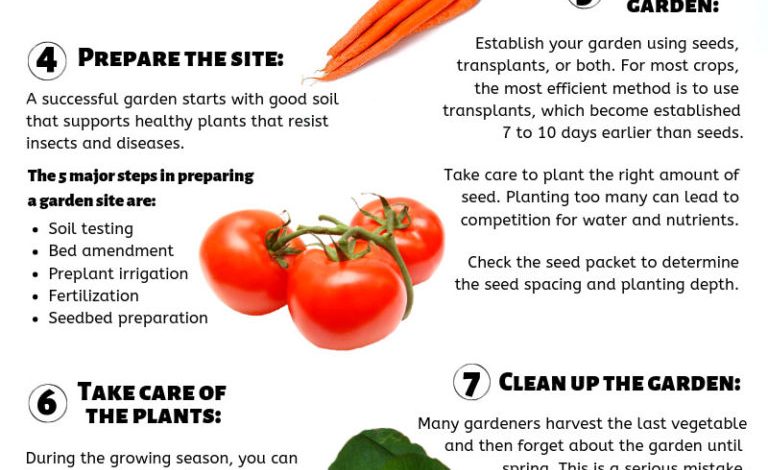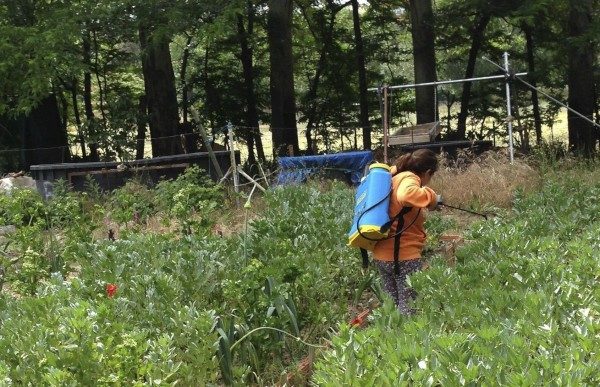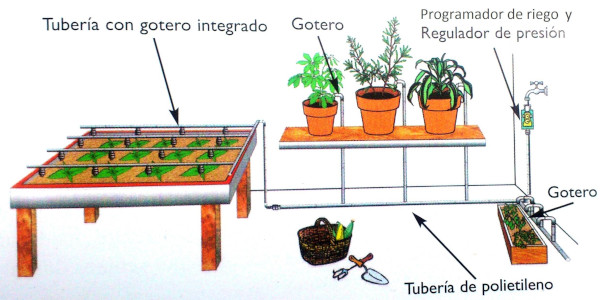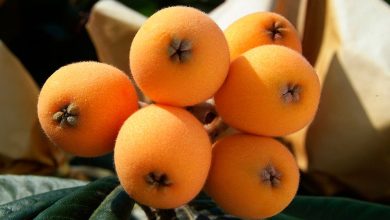How to take care of the plants of the organic garden. Types of cultivation tasks

Today we will continue to see some of the most important things to grow a garden at home and take care of plants. After having made the seedbeds and transplanting the vegetables to the definitive land (terraces on the ground, cultivation tables, planters…), it is time to wait a few months to be able to enjoy the harvest…

Cultivation work in the organic garden
During this time of development of the plants in the garden we cannot sit idly by, but there are a series of cultivation or cultural tasks that we must carry out so that the plants grow healthy and strong.
In today’s post we will see what these cultivation tasks are to take care of horticultural plants. Specifically, we will see some of the main ecological techniques, since what we intend from Agrohuerto is to spread the practice of organic farming, a production system that respects the environment and health, which provides us with much healthier and tastier food..
These cultivation tasks or ecological techniques also help reduce crop pests and diseases. They are part of the integrated pest control, the ecological method that combines prevention with the use of natural methods and products to control pests and diseases of the plants in the organic garden.
To take care of the plants in the organic garden and be successful with the harvest, it is important to know and carry out several of the cultivation tasks that we will talk about today.
As we will see, some of the following tasks to take care of the orchard are carried out before the implantation of the crops (for example, the preparation and fertilization of the land or the cleaning of the tools). In contrast, other cultivation tasks, such as pruning tomato plants or weeding, are carried out while the crops are growing.
Pre-cultivation work
Disinfection of tools and implements
The tools may have been in contact with plants affected by fungi, plant debris with insect eggs or spider webs that, if not removed, can transmit pests and diseases to our new crops.
It is very important to keep the tools clean, especially if we have had pests or diseases during the previous season.
To disinfect tools, tools can be immersed in boiling water, ethyl alcohol, bleach, or specialized commercial sterilants.
Soil preparation work: tillage and fertilization
It is important, first of all, to remove the remains of the previous crop. One option is to chop up and bury these remains deep in the ground. This green manuring technique is a way of preparing or loosening the soil and fertilizing it at the same time.
You can also accumulate the remains of previous crops with other organic remains to make home garden compost to fertilize the garden.

It is important to eliminate the «crust» that may have formed on the surface of the soil and aerate the superficial layers to favor the development of the roots of the crops that we will sow or plant later. For this, tillage or weeding (with a mechanical mule or motorized tractor, hoe, hoe, shovel or other tools to cultivate) is essential, and also eliminates weeds and crop residues that may have remained.
Simultaneously or after this tillage or weeding, it is convenient to fertilize the land. There are many ways to fertilize the organic garden, although one of the best known is the application of compost before sowing or planting.
Planning and installation of the irrigation system
Irrigation is an essential task for plants to develop because water is essential for their growth, the transport of nutritional substances from the soil to the plant and the formation of fruits.
Although in some places the abundant rains make irrigation work unnecessary, in most orchards, and especially in spring-summer crops, irrigation planning in the orchard is completely necessary. It is important to know the water needs of crops and plan the dose and frequency of irrigation to prevent plants from drying out due to lack of water or from becoming ill due to excessive irrigation.
Ecological techniques and tasks to take care of garden plants
Irrigation
At Agrohuerto we always recommend the most efficient and environmentally friendly irrigation systems, such as drip irrigation or exuding tape, which minimize water loss, although there are other types of irrigation that can be installed in the orchard or garden, everything depends on the space we have, how big the garden is, the available water…

Prevention, surveillance and control of pests and diseases
The prevention of pests and diseases is one of the most important cultivation tasks of the Integrated Fight, one of the pillars of organic farming. It is important to be alert to the appearance of possible pests and diseases and remove the leaves and other affected organs to prevent them from spreading.
In addition to continuous surveillance tasks for the early detection of bugs on plants or signs of pests or diseases, it is convenient to carry out ecological techniques to reduce the chances of pests, fungi or other problems appearing.
Among these ecological techniques stand out the association and crop rotation, the use of aromatic and useful flowers in the garden to ward off pests, or the use of biostimulants for healthier plants.
It is also convenient to apply some of the natural insecticides against pests and diseases to the soil, in the irrigation water or on the plants . These ecological preparations will help us drive away insects or microorganisms before they become a serious problem.
If they have already done so, these ecological insecticides can be combined with several of them with more frequent applications to fight against pests and diseases that have attacked the plants in the garden.
Padded
The use of padding or mulching for orchards has multiple benefits for the soil and for the crops.
Mulches help take care of plants because, among other things, they protect crops from weeds, maintain soil moisture better (which allows us to save irrigation water) and can serve as organic fertilizer that decomposes little by little in the ground and providing beneficial nutrients for plants.
In the case of plastic mulching, although they do not provide organic matter, they almost completely reduce the incidence of weeds around our crops.

weeding
It consists of uprooting, with a light tool with sharp blades (a small hoe, a cultivator, a almocafre, etc.) the roots of the herbs, removing the superficial layer of the soil and aerating it to also facilitate drainage and prevent the appearance of scabs.

Weeding or weeding during cultivation is very important, especially if we have not put plastic mulching or some type of padding that protects the soil.
In addition to serving to control weeds, weeding during cultivation (with) favors the incorporation of organic matter and aeration of the soil, reducing the incidence of pathogens such as fungi, bacteria and nematodes in the soil.
tutored
In some of the most common vegetables such as tomatoes, beans, peppers… it is convenient to stake or stake the plants in the garden to prevent the stems from falling over or breaking due to the weight of the fruits.
In addition to the link that I left you above with some of the main types of tutors, you have this video that Álvaro left us on Canar Agrohuerto TV on how to tutor plants in pots:
Thinning and pruning of vegetables
Pruning is very important in woody plants such as wild fruit hedges, but it is also essential to care for horticultural plants such as tomatoes, peppers, courgettes or watermelons.
Pruning or thinning favors the fattening of the fruits and the vigor of the plant.Using the search engine that we have on the blog (top right) and entering the word “pruning” you can access the Agrohuerto posts that explain how to prune vegetables step by step.
Other farming tasks to take care of the garden plants
In plants such as beans, courgettes or cucumbers, the ripe fruits must be continually harvested so that the plant continues to produce new ones.
The same thing happens in most of the aromatics, in which the harvest is staggered, unlike in leafy or compound vegetables (lettuce, cauliflower…) in which each plant gives rise to a single harvest.
In addition, there are other cultivation tasks to take care of the plants in the garden:
- Blanching of vegetables in the case of celery or lettuce,
- Hilled in crops such as asparagus,
- Pinching of the axillary bud or apical shoots to control plant growth,
- tied in some varieties of lettuce so that they do not open,
- Treading of onions and other bulbs…
Do you know other tricks to take care of garden plants or cultivation tasks that we have not talked about? Do not hesitate to leave your contributions and advice in the comment threads of any blog post. Cheers!

![Photo of Carob tree: [Cultivation, Irrigation, Care, Pests and Diseases]](https://www.complete-gardening.com/wp-content/uploads/2022/08/carob-tree-cultivation-irrigation-care-pests-and-diseases-390x220.png)

![Photo of Hyacinth Care: [Soil, Humidity, Pruning and Problems]](https://www.complete-gardening.com/wp-content/uploads/2022/08/hyacinth-care-soil-humidity-pruning-and-problems-390x220.jpg)
![Photo of The [15 Best] Durable and Hardy Houseplants](https://www.complete-gardening.com/wp-content/uploads/2022/08/the-15-best-durable-and-hardy-houseplants-390x220.jpg)